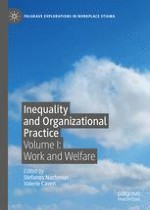Abstract
Despite the growing support for equality, diversity and inclusion in UK organisations, the transgender population has received insufficient attention in diversity management, legislation and research. Within this population are individuals who identify as ‘non-binary’ or ‘genderqueer’. These terms are used interchangeably to refer to individuals who challenge the binary gender expression of male or female as a fixed attribute and see gender identity as fluid (Butler, J., Gender trouble: Feminism and the subversion of identity. London: Routledge, 1990; Carroll, L., Gilroy, P.J. and Ryan, J., 2002. Counseling transgendered, transsexual, and gender‐variant clients. Journal of Counseling & Development, 80(2), pp. 131–139). Such persons have to navigate the binary systems of society and are at risk of social ostracism and discrimination both in and out of the workplace (Lorber, J., Paradoxes of gender. New York: Yale University Press, 1994). These inequalities are the focus of this chapter. This chapter considers constructions of gender and identity (Oakley, A., Sex, gender and society. Aldershot: Gower, 1972; Butler, J., Gender trouble: Feminism and the subversion of identity. London: Routledge, 1990, Butler, J., Bodies that matter: On the discursive limits of “sex”. London: Routledge, 1993; Lorber, J., Paradoxes of gender. New York: Yale University Press, 1994; Fausto-Sterling, A., Sexing the body: Gender politics and the construction of sexuality. New York: Basic Books, 2000) which challenge the current views of gender, to better understand the increasing societal awareness of non-binary gender identities. Following this, the authors critically examine the legislative protections, diversity management practices and limited management literature surrounding people with these gender identities in order to highlight the hidden inequalities that exist for them in these areas.
